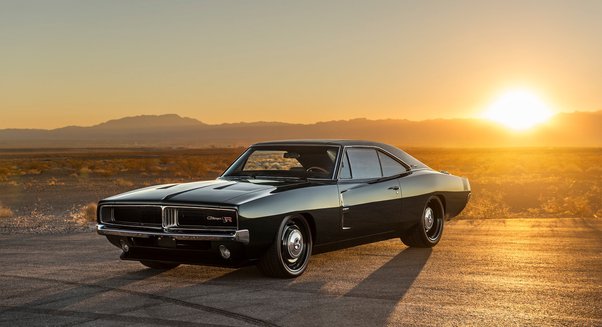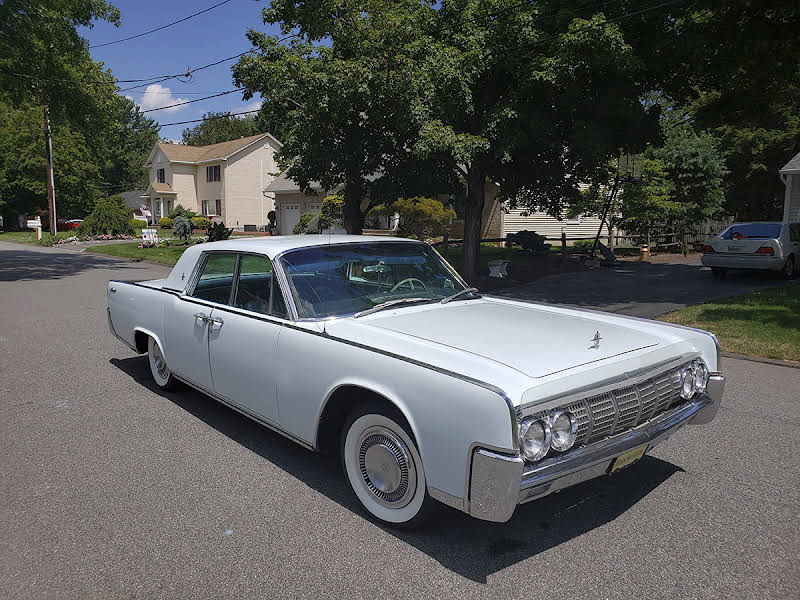
There are several options for sport sedans. A luxury sport sedan may be the best option for those looking for a sports-oriented luxury car. These vehicles have adaptive suspension systems and stronger engines. They also offer sharper handling and responsive brakes. A luxury sport sedan is luxurious and can be a real treat. Listed below are some of the options. Pick your favorite to start your search in finding the perfect luxury sports sedan.
BMW 3 Series
The BMW 3 Series' flagship model, the 3 Series 3 Series, was introduced in spring 2018. It continues the tradition of sporty driving. The new generation maintains the BMW 3 Series' sporting heritage while being more dynamic and fun than ever. The latest 3-series aims to revolutionize the mid-size sedan segment with its combination of sophistication and sportiness. It features a modern exterior design as well as a variety of connectivity options and technologies. An M Sport Style package can be purchased for those who are looking for an upscale, sophisticated car.
Mercedes-Benz C-Class
There are two main trim levels for the Mercedes-Benz C-Class: sport and luxury. The main differences between the two sub-trims include wheel designs and suspension tuning. They also differ in interior/exterior styling. Optionally, the all-wheel-drive system is available on the sport-oriented C-Class. The C-Class's new engine is a turbocharged V-6, which produces 295 horsepower and 295 pounds-feet of torque. But you can also have a V-6 producing 260 horsepower.

Audi S3
The Audi S3 is a sport sedan by the German manufacturer. It offers a wide range of standard features and optional options. The base model starts at $42,000. However, the Prestige trim adds a number of luxurious features including heated seats, and a Bang & Olufsen sound system. Premium Plus trim adds Technology packages, including an Audi Virtual Cockpit gauge and in-dash navigation. The S3 comes standard with the same warranty as the rest. This covers the powertrain, bumper-to–bumper coverage, and the engine for four-years.
Stinger GT Limited
The Stinger GT Limited sports sedan is a redesign of the Stinger, and the second-generation Stinger. Both cars feature the same features, but each car has a unique set of features, such as a blacked hood and rear spoiler. The special edition of Stinger will include a redesigned Kia logo as well as a new "Stinger” badge at the rear.
Cadillac CT4
The Cadillac CT4 is the most compact sedan, and will be offered in many performance versions. This compact luxury car will provide sporty acceleration, modern technology features, and exceptional fuel economy. The CT4-V is a performance variant with added power, including a 320 horsepower four-cylinder Chevy engine. Other features include wireless charging, a navigation system, and digital instrument displays.
Lincoln MKZ
The 2020 model year brings some changes to the Lincoln MKZ sport sedan. New colors have replaced the previous models, and only lane keep assist and blind-spot monitoring are standardized. An optional Monochromatic Package adds 19-inch wheels and a body-color upper grille. The MKZ also gets a new suite driver assistance systems. It is anticipated that the MKZ will cease to exist after 2020.

Porsche Panamera
Although the Porsche Panamera may not be as sporty than its competitors, it is still a superb choice for luxury performance sedans. The Panamera's smooth ride, superb handling and exceptional acceleration make it a top-quality performance sedan. Edmunds.com evaluated the Panamera, and found it to both be a great choice for luxury lovers and drivers. Here are the details.
FAQ
Is it important which college I go?
You're wrong. There's no difference between colleges regarding getting into the automotive industry. But, there are better programs at some schools than others. Look elsewhere if you want something more niche.
How long does it take you to become a great mechanic?
Expert mechanics take years of practice and extensive experience. Working under the guidance of a professional mechanic is the best way to learn how repair cars.
You will be required to spend time at a car garage learning as much as you can about cars. You will need to read books on mechanical engineering and car design.
You will also need to go to auto school.
It's crucial to start as soon as possible. To learn about automotive technology, don't wait to be older. You can get certified as a mechanic by getting started right away!
What qualifications do you need to be a truck-mechanic?
Although you don’t have formal qualifications, you have extensive experience with engines and trucks. Your experience is invaluable as you know how to diagnose problems quickly and efficiently.
A solid understanding of diesel technology is also a plus. This will help you understand the components that are needed to fix our vehicles.
What qualifications is required to become an mechanic?
A series of tests is required to be a mechanic. These exams include:
-
A general knowledge exam
-
Practical exam
-
An apprenticeship test
These tests are designed for you to understand the basic concepts and principles of mechanics before your start as a technician.
You'll be eligible for work as a mechanic after you have passed the tests. You will still need to complete an apprenticeship. This will require you to learn the trade.
You'll need to attend classes and workshops to learn everything you need to know about repairing vehicles. You'll also have to work alongside experienced mechanics.
You'll need a high level of concentration and attention to detail if you want to succeed as a mechanic. Repairs to vehicles require you to pay attention to every detail.
To become a good mechanic, you need patience and persistence. If you don’t enjoy following instructions, this might not be the right career path.
However, if you love cars or enjoy working on them, you might be happy in this field.
How long is an automotive course?
An automotive course lasts for three years.
The first year is spent on theory, learning all about cars. The second year will be spent in practical training. Here you will learn how fix engines, drive and other mechanic jobs. You will spend the final year working in a local garage to gain real-world experience.
What type of job is there for a car mechanic?
Three main areas of employment are available for car mechanics:
-
Automotive repair shops
-
Dealerships
-
Independent garages
Automotive repair shops
This is the place most people begin to consider becoming mechanics. It's actually the easiest way to start. You have two options: work in an existing shop or open your own.
If you are interested in working at a shop you will need to apply for membership to a union. After being accepted into the union, the union will provide training.
Once you complete the training, it's time to get started.
If you plan to open your own garage you will need to register with government. After registering, you'll be required to meet certain standards.
You will receive a license to run your garage once you have registered.
Your license allows for minor repairs and spare parts sales. It will not permit you to fix major engine issues.
As well as selling spare parts you will need to offer advice and direction to customers.
Dealership jobs
Most dealerships employ mechanics who can specialize in a particular area of the car. For instance, they may only be qualified to fix brakes or change tires.
Some dealerships hire general mechanics to handle all aspects of car repair.
These positions often require applicants that they undergo special training before being allowed work. Employers can then choose the best candidates for their job.
Some dealerships hire students straight out of college. These graduates already know the basics of mechanical engineering and therefore have no problem learning about cars.
Independent garages
Independent garages do not belong to any dealership. They tend to be focused on high-quality service.
Independent garages are not associated with any companies so they can afford higher wages. This makes them generally more well-paid than jobs at dealerships.
Independent garages can be just as good places to work, but this does not mean they are better. Many business owners prefer to own their businesses and not delegate the responsibility to others.
So you may find yourself working long hours without having any say over what happens during the day.
It is also possible to expect lower wages than you would if working at a dealer.
It's possible to switch between jobs. To work at a dealership you will need to contact your employer to see if he is open to the idea of hiring you.
Alternativly, you can apply directly to the garage owner if you are interested in working at an independent garage.
It's not always easy to find a job. There are many factors that affect how much you make.
For example, the type of vehicle you repair and whether you charge extra for labor.
Statistics
- 52% of Mechanics in the United States think their salaries are enough for the cost of living in their area. (indeed.com)
- Apprentice mechanics earn significantly less hourly than mechanics who have completed training, with a median wage of approximately $14.50 an hour, according to PayScale. (jobhero.com)
- According to the BLS, the median annual salary for automotive service technicians and mechanics in the United States was $44,050 in May 2020. (uti.edu)
External Links
How To
How to properly diagnose and repair your vehicle
To determine if your car needs repairs, you should first look at the symptoms that your car presents. These steps will help you diagnose your car properly.
-
Check engine lights. Inspect the dashboard light indicators. These include the engine lights, the oil pressure gauge and the battery light indicators. The RPM gauge and coolant temperature gauge should also be checked. It could indicate that your vehicle is having problems.
-
Inspect the tire treads. If the tires are worn out, they could cause problems with handling and braking. It is also important to inspect the wheel treads. They should look clean and be smooth. To do this, remove the wheels and take them out. Check the tread condition with a flashlight.
-
Observe the brake fluid level. It is important to keep track of how much brake fluid you have in your car. This will ensure that your brakes run smoothly. Low brake fluid levels can cause brake failure when you apply pressure.
-
Check the suspension system. The suspension system in vehicles absorbs vibrations and shocks. It improves control and allows for smoother accelerations or decelerations. You might notice a wobbly feeling or uncontrollable shaking in your vehicle if it has a problem with its suspension. You can test if your vehicle has a suspension problem by putting weight on either the front or back axle to see how it moves.
-
Examine the steering wheel. The steering column is used to link the steering wheel with the rest of vehicle's components. The steering column can often be damaged by an accident. You should replace your steering column if it feels loose or unstable.
-
Pay attention to the exhaust pipe. The exhaust pipes are responsible for moving gases from the combustion chamber into the atmosphere. Your cabin will be effected if your exhaust pipe cracks or leaks. You should also fix any bent tailpipes immediately.
-
Take a look at the underside of your hood. If you see anything unusual, take a look under the hood. Fluids could be leaking from your engine. If you smell something strange coming from your engine compartment you should call a professional technician.
-
You should inspect your air filter. The outside environment can collect dust and other debris in your vehicle's air filters. A dirty filter can lead to a poor vehicle's performance. Replace your air filter regularly.
-
Check the fan belt. Your vehicle's fan belt connects the engine to the transmission. The engine will not turn if the fan belt breaks. The process of replacing the belt is straightforward. All you need are a screwdriver & pliers.
-
Make sure you inspect the radiator hoses and hoses. The radiator-hose carries water to the engine. If it becomes cracked or damaged, it can leak hot liquid onto the engine. To repair the leaky hose, all you need is a pair if needle-nosepliers.
-
The windshield wipers should be checked. Windshield wipers use electricity to clean away snow and rain. If they stop working they could leave streaks behind on your window glass. You can fix the problem by changing the washer fluid.
-
Check the battery cables. The battery cables provide power for the electrical systems in your car. Always disconnect the negative wire before you replace batteries. Failure to do so can damage your alternator.
-
Make sure your headlights are working properly. Headlights are used to illuminate the road ahead. If they don't work properly, it can cause poor visibility. To check if the bulbs have gone out, you can inspect them.
-
Check the lights. Lights warn other drivers when you approach them at night. If one doesn't work, it could distract you and lead to an accident.
-
Inspect your brakes. Brakes slow down your vehicle before a collision. You may lose control of your vehicle and crash if the brakes don't function properly.
-
Change the oil. The oil keeps your engine well lubricated. It helps prevent metal parts from wearing out too quickly. It is recommended to change the oil once a month.